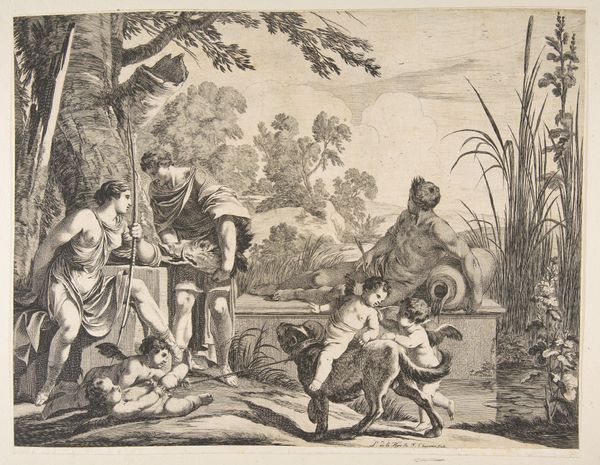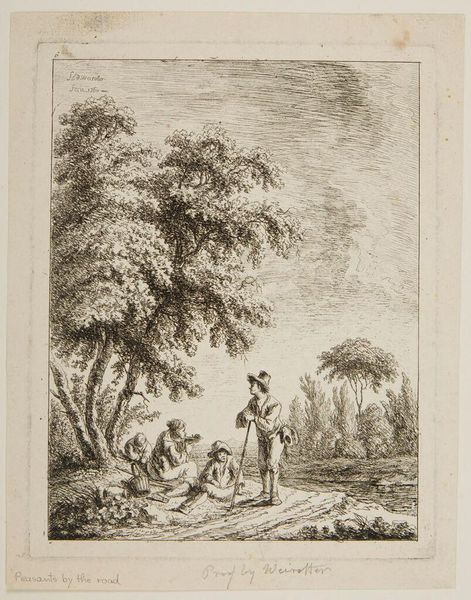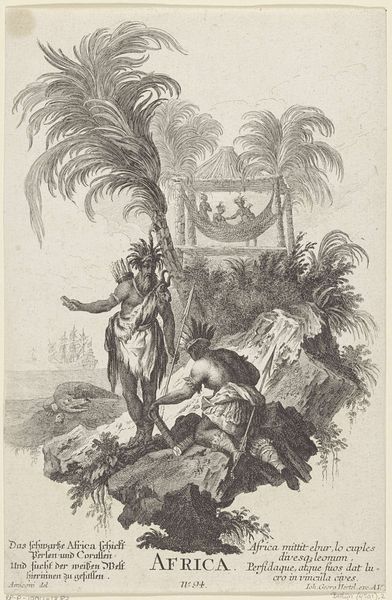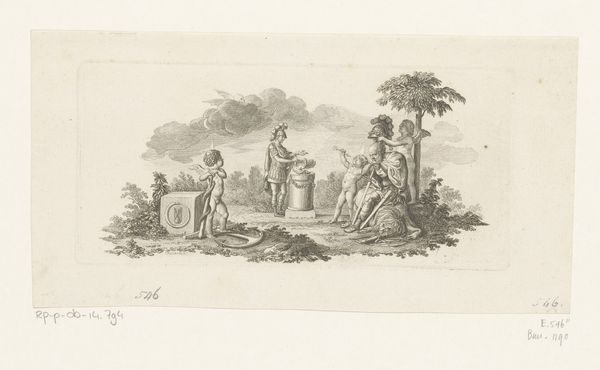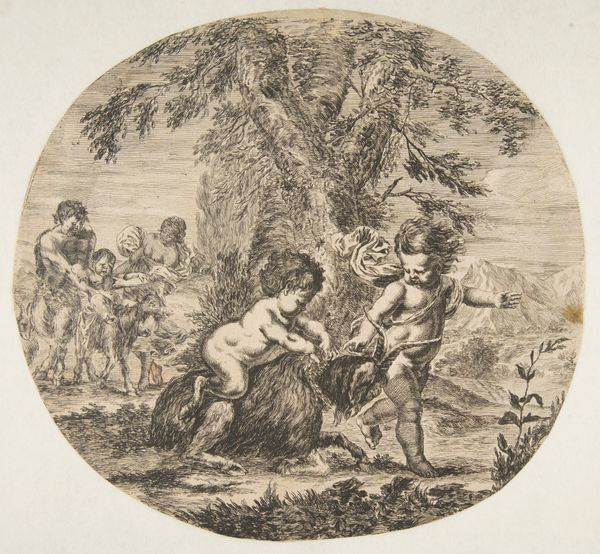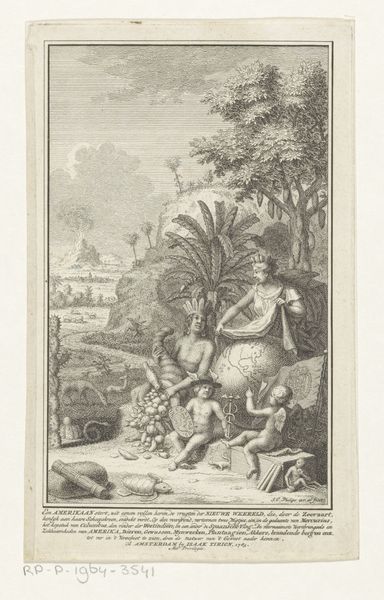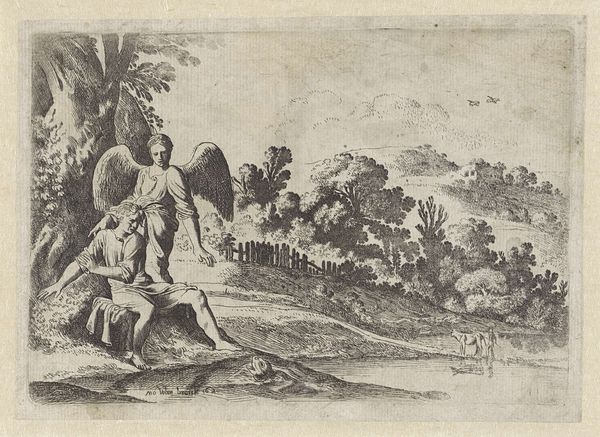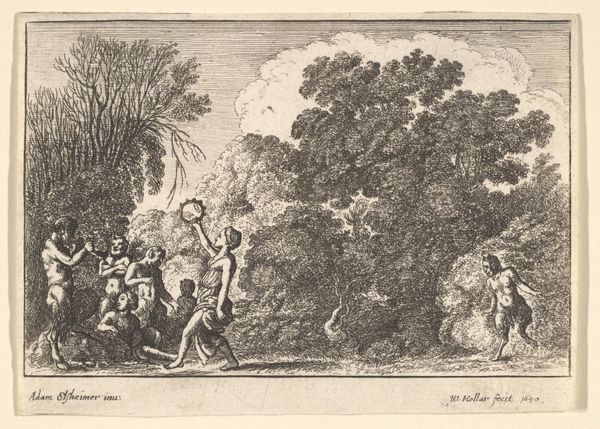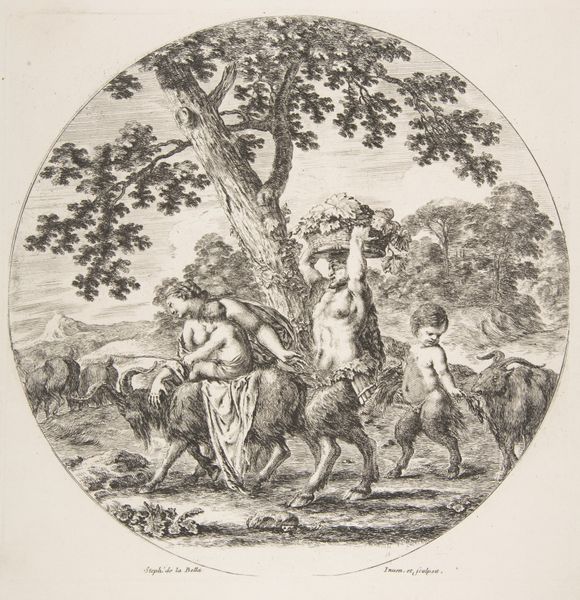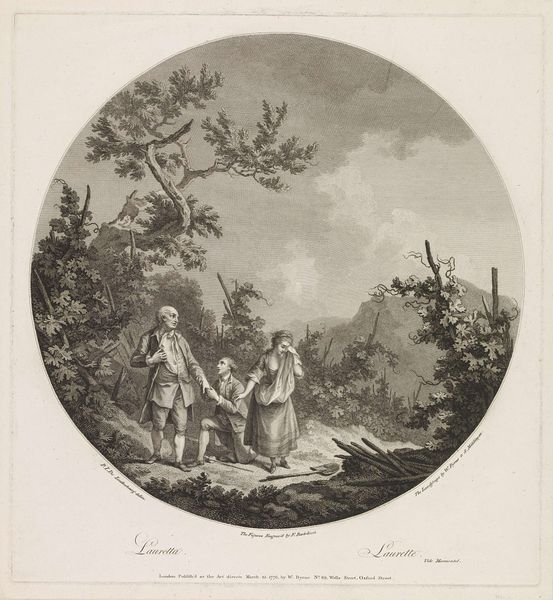
Dimensions: height 66 mm, width 79 mm
Copyright: Rijks Museum: Open Domain
Editor: So here we have "Four Putti with Allegorical Attributes," a print made in 1774 by Reinier Vinkeles. It feels so light, almost whimsical, but with this underlying sense of, well, baroque seriousness, you know? All those symbols! What do you see in this piece? Curator: Oh, it's a visual feast, isn't it? For me, it's like peering into a delightful, miniature theatre. Look at the stage setting: palm trees swaying, soft lighting. But beyond the visual charm, I’m wondering if this piece serves as a coded message. What if these aren't just cherubs, but symbolic guides ushering us through a philosophical narrative? What elements grab your attention besides the "whimsical" air? Editor: I guess, that one is a bit sinister - a beehive that symbolizes diligence and industry... right next to the baby! Curator: Ah, there you have it! Juxtaposition. Exactly the tension I was pointing towards. Light and dark, innocence and knowing. But tell me, isn't there also something hopeful in seeing even the most virtuous concepts represented by such seemingly innocent beings? Perhaps Vinkeles is suggesting we recapture that childlike wonder in our pursuit of, well, everything? Editor: That makes a lot of sense. It’s like he’s saying that even serious concepts like diligence and virtue should be approached with a sense of playfulness. Curator: Precisely. The more I look, the more I am convinced of it. What initially felt purely decorative now seems rich with layers of meaning. Who knew babies and beehives could be so profound? Editor: I love how it challenges you to dig a bit deeper, past the surface. I'll never look at a putto the same way again. Curator: Nor I!
Comments
No comments
Be the first to comment and join the conversation on the ultimate creative platform.
